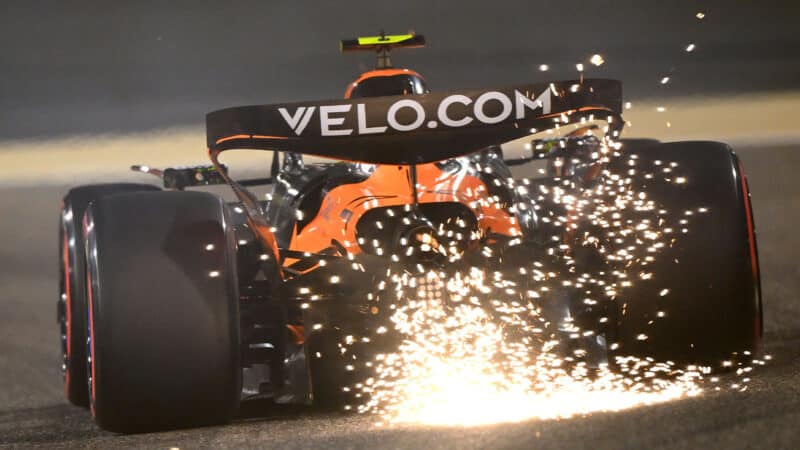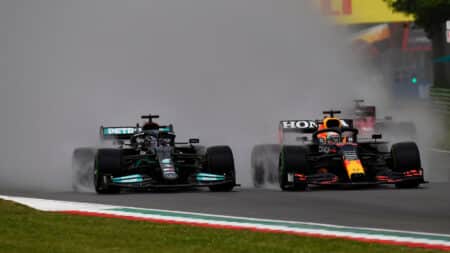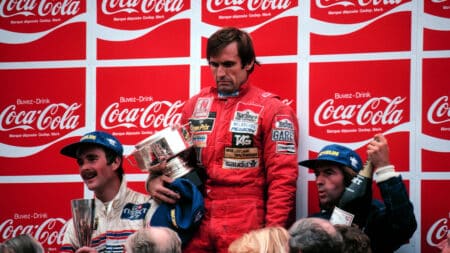The discussions centred around reducing the costs of research and development of F1 engines, reducing the complexity of the power units, and considerations on sustainability, weight reduction, performance, road car relevance and sound appeal.
The gathering was seen as a ‘crisis meeting’ amid concerns that the regulations could result in a huge disparity in performance between some of the manufacturers.
The split between electric and combustion power decided several years ago for the regulations is proving problematic.
As reported by Motor Sport earlier, one engine manufacturer is believed to be in good form while the other four are reportedly far behind the performance of the first one.
As a result of the issues, there have been serious concerns about how the field could be spread out next year if one engine supplier is so far ahead.

No V10 engines – for now
Getty Images
Those fears led to talk about the re-introduction of V10 engines before the scheduled rules cycle (2026-2030) has been completed.
But Friday’s meeting appears to have ruled out any early switch, with the FIA saying that everybody involved committed to the 2026 rules as they stand.
The governing body said, however, that “minor refinements and adjustments” are still being discussed.
“Besides the 2026 regulations, a range of options and timelines for the future were discussed,” said the FIA in a statement. “One of the topics under discussion was the adoption of normally-aspirated engines with sustainable fuel.
“Whichever engine roadmap is decided upon, the FIA is supportive of the teams and PU manufacturers in ensuring containment of costs of R&D expenditure, taking account of environmental considerations and acting in the best interests of the sport and the fans.”






